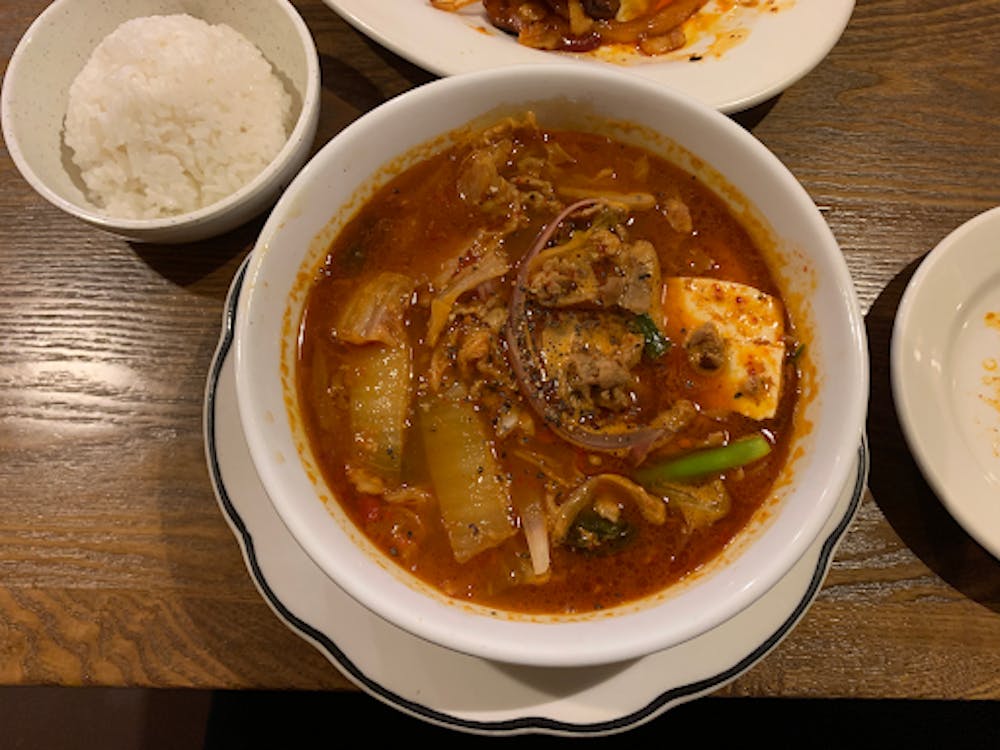On the western edge of campus lies Alexander Street, a road rarely-mentioned among the student body. It may not have as many vibrant restaurants or be as commercialized as Nassau — commonly thought to be the soul of downtown Princeton — but it houses a hidden gem: Soonja’s Cuisine.
Located across the street from the Springdale Golf Club, the restaurant’s quaint exterior renders it both mysterious and inconspicuous at first glance. I walked down the two sets of wooden stairs, feeling intimidated by the somber atmosphere created by the dim lights. I sat down with my friend, who accompanied me to enjoy a nostalgic taste of home, anxious about what to expect. The owner of the restaurant briefly explained to us that while Soonja’s offers a range of Asian foods, their speciality is Korean cuisine. Scanning the menu, I immediately found this to be held true. Our familiarity with dishes such as bulgogi — barbecue-grilled slices of beef (though chicken and pork were offered as alternatives here) — and soondubu — spicy magma-colored tofu stew — enveloped us in a sense of coziness.
As I pondered what to order, I realized that this menu had fewer items than the places I’d visited back home in Fort Lee, N.J., but tried to keep that observation from distracting me from the present. Ultimately, the piercing winds of the transitioning seasons led my friend and I to order the kimchi jjigae — spicy kimchi stew — in an attempt to warm our slightly shivering bodies. We also ordered tteokbokki, stir-fried rice cakes, which I had never tasted before and was excited to try. While waiting for our food, we admired the decor of traditional paintings, which contained Hanja characters, the traditional Korean writing system that incorporates Chinese characters.
The tteokbokki was served first. It was covered with a golden glaze and came with carrots, Korean squash, and shreds of white onion and cabbage. White and black sesame seeds garnished the platter. It was a perfect balance between sticky, sweet, and spicy. It was truly a performance of flavor; the light sweetness of the sauce-glaze opened up the show, followed by the firm yet gelatinous texture of the rice cake itself, and a crescendo of mild spiciness closed it all out. The slight crunchiness of the cabbage, carrots, onions and tenderness of the squash provided an array of different textures to counter the chewiness of the rice cakes. This tteokbokki was certainly a unique introduction for me to the snack/street food that is very popular on the Korean peninsula.
Later came the kimchi jjigae in medium-sized bowls. The peppery aroma jumped right at my nostrils, and the broth caught my attention with its spicy-looking red hue and its warm rising steam. The stew broth instantly warmed me, save for a hint of wateriness that toned down the spiciness. The following sips were much better as the spiciness started to kick in gradually, but not overwhelmingly.
The tofu was almost al dente, but still soft enough to be easily separated with a spoon. It provided a very pure, soothing comfort. The kimchi, slices of red-tinted, fermented cabbage, was also of a mostly-soft texture, albeit a bit crunchy during some bites. Its slight tanginess paired well with the savoriness of the tender, thinly-sliced pork. The less-prevalent slices of onions and long scallions in the stew were especially crunchy and refreshing.
Walking back with my friend, I made a mental note to remember how to get to the hidden treasure of Soonja’s, for it deserves all the hype and attention that restaurants on Nassau Street receive. All eyes ought to be focused on Soonja’s Cuisine!
Russell Fan is a contributing writer for The Prospect at the ‘Prince.’ He can be reached at rf4125@princeton.edu, or on Instagram @russell__fan.








